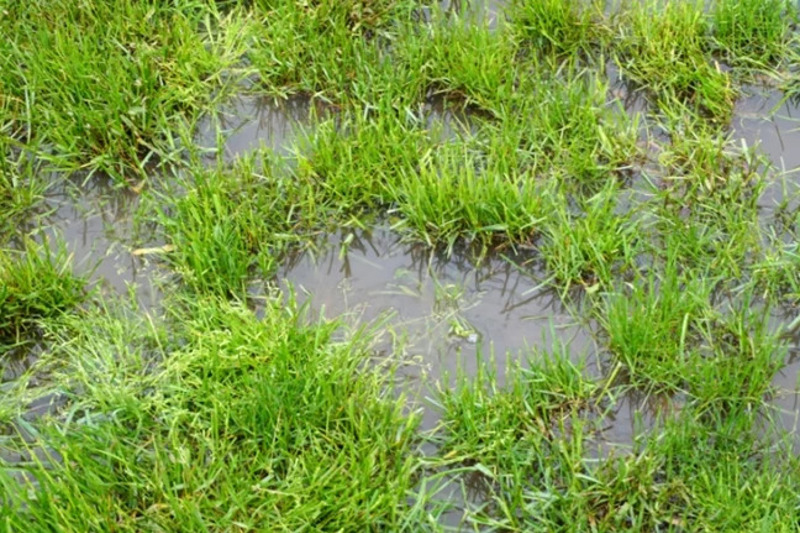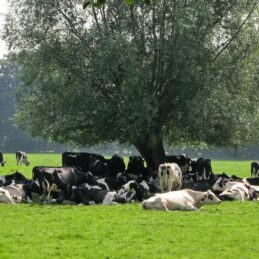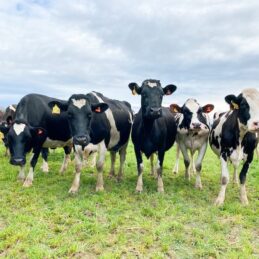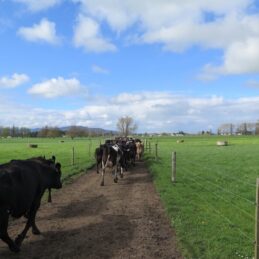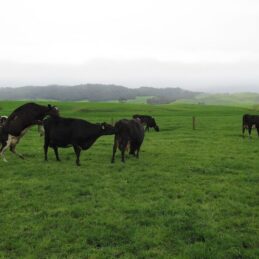Written by Trish Lewis, Silage Consultant
When crops have been flooded prior to cutting for silage, there is an increased risk of poor fermentation, lower nutrient content of the silage and possible animal health issues. It is important to understand these risks before deciding whether to go ahead and ensile the crop, and where possible to take steps to mitigate the risks.
The initial effects of flooding can be a crop which has been underwater for a period of time, and contamination from soil and/or faecal and other organic material from the flood waters. Crops that have been underwater can have lower nutritional value, with increased leaf senescence, and be more vulnerable to fungal and other microbial contamination, particularly in the base of the crop.
Sometimes a crop may be lodged (laid over) after flooding which makes it harder to harvest. Silt contamination going through machines can have a wearing effect. There can also be debris from flood waters deposited in the crop, which may damage harvesting equipment.
Soil can contain high numbers of undesirable bacteria such as clostridia. These organisms can result in poor silage fermentation, protein breakdown and butyric acid production, particularly in wetter silage. Soil can also contain listeria, which can be harmful to stock health. Listeria are pH sensitive, so more commonly found in drier silage with a higher pH.
Faecal material can contain high numbers of enterobacteria which also adversely affect silage fermentation. When silage fermentation is impaired by undesirable organisms such as clostridia and enterobacteria, the silage has a lower nutritional value due to breakdown of protein and sugars, and is generally less palatable.
Any contaminants in silage which have no feed value reduce the quality of the silage. For example, if a crop would have had a metabolisable energy (ME) of 10 MJ/kgDM and crude protein (CP) of 16% when ensiled but contains 10% soil, the contaminated silage will only be 9 MJ/kgDM and 14.4% CP. This drop in nutritional value can change a silage from one suitable for maintenance plus production to a maintenance only feed.
Soil also contains an imbalance of minerals relative to stock requirements, in particular a high iron content which can reduce the uptake of other minerals, especially copper, and directly affect stock health.
Moulds/fungi growing on the crop or in the silage can produce mycotoxins which can affect stock health. They can be harmful to rumen microbes and reduce feed efficiency, impair immunity and leave stock more vulnerable to other infections, and occasionally affect fertility or cause abortion.
Three questions to ask when assessing whether to harvest a flooded silage crop are :-
- What will the nutritional value be relative to previous expectations
- How hard will the crop be to harvest?
- How difficult will it be to achieve a good fermentation?
- What are the likely risks to stock health?
Even if the crop will have less nutritional value, it may still be worth ensiling if it can be well fermented and is safe to feed. It could be fed to stock with a lower nutrient requirement such as dry stock. It is good to involve the contractor in the assessment, particularly to discuss possible harvesting challenges but also many contractors have previous experience of harvesting flooded crops and can make valuable suggestions.
The risks of a poor fermentation can be reduced by using a proven, fermentation enhancing inoculant (take care to select a suitable product). However, no inoculant will overcome very high numbers of spoilage organisms from heavy contamination with silt or effluent, or from crops starting to rot in the paddock. Raising the mowing/cutting height can help if contaminants are mostly in the base of the crop (which is often where you find rotting vegetation after flooding).
If listeria is a risk, achieving a good lactic acid fermentation and low final pH can help, as listeria don’t grow at a low pH. Also minimising the time between feeding out silage and it all being consumed will reduce any increase in pH once silage is exposed to air.
If there is a risk of mycotoxin contamination, consider how vulnerable the stock to be fed are. Stock most at risk to harm from mycotoxins are young animals, those pregnant or freshly calved, and any stock previously exposed to mycotoxins with possible liver damage. In some cases the risk from mycotoxins can be mitigated by dilution with clean feeds and by feeding a registered mycotoxin binder.
If ensiling flood affected crops, always follow good silage practice from start to finish – properly prepare the storage site, get the chop length right, inoculate, consolidate the stack (or compact bales) well, use good quality covers or wrap, and seal straight away with touching tyres or a UV cover and gravel bags.
For stacks that have gone under water, the main issue is that the water dilutes or washes out the silage acids so the pH increases and the silage is then vulnerable to spoilage organisms, as it is the silage acids that preserve the silage. The water can also remove some of the soluble nutrients so the remaining silage will have lower nutritional value.
The other concern is that floodwater can contaminate the silage with soil particles and other contaminants. A combination of soil contamination and an increase in silage pH greatly increases the risk of clostridial spoilage.
It depends on the length of time underwater as to how far the flood water will have penetrated the silage stack. In some cases it may just be the sides that start to spoil. The cover can be carefully pulled back and the silage assessed – there may be an option of removing the affected silage and recovering the good silage underneath.
pH paper can be a useful tool in assessing the silage to see how far in the damage penetrates.
For a stack of bales, it may be the bottom layer has been flooded and the top layer stayed dry. If water has penetrated into the bottom bales, they may start to spoil for the same reasons as with stack silage, and will slump.
In this situation it is best to restack the top bales somewhere dry and keep them for later as they will have a long shelf life, and sort through the bottom bales to feed out the silage that is still OK sooner rather than later. Silage with a higher pH is going to continue to deteriorate over time.
Feeding spoilt silage can cause serious health issues in stock so when sorting through what to keep and what to discard, don’t be tempted to keep any mouldy or foul smelling material.

